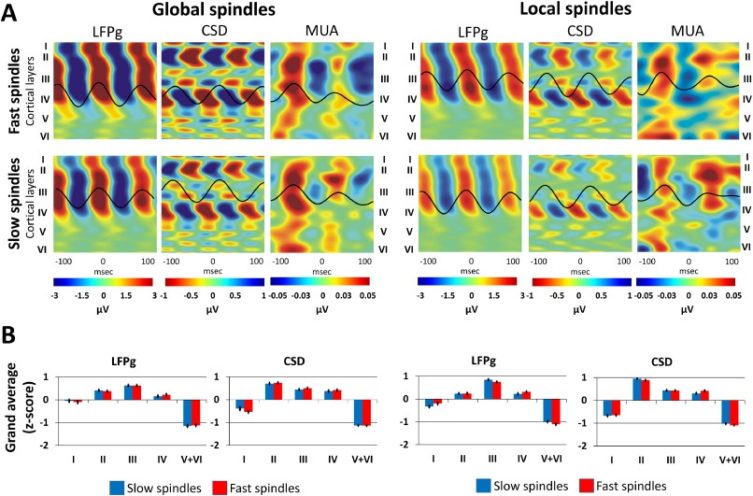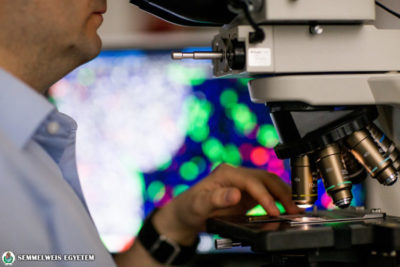The laminar profile of sleep spindles in humans
 We spend the majority of our sleep in NREM sleep. As Dr. Péter Ujma, assistant lecturer at the Institute of Behavioral Sciences, explained that this type of sleep occurs first when we fall asleep and it is the stage we homeostatically get into after sleep deprivation. Therefore, this is probably the most functionally important part of sleep. Among the brain waves that can be recorded even from the scalp with the help of EEG during NREM sleep, the most common ones include the so-called sleep spindles, which appear up to six to eight times per minute.
We spend the majority of our sleep in NREM sleep. As Dr. Péter Ujma, assistant lecturer at the Institute of Behavioral Sciences, explained that this type of sleep occurs first when we fall asleep and it is the stage we homeostatically get into after sleep deprivation. Therefore, this is probably the most functionally important part of sleep. Among the brain waves that can be recorded even from the scalp with the help of EEG during NREM sleep, the most common ones include the so-called sleep spindles, which appear up to six to eight times per minute.
A theory of sleep spindles has suggested that two different pathways of the thalamus projecting into the cerebral cortex are responsible for different types of spindles. One of them is the “core” system, which projects mainly into the deeper layers and well-defined areas of the brain and is responsible for the rapid and local spindles that appear in a small area of the cerebral cortex. The other is the “matrix” system, which projects into the surface layers, wide areas of the brain and is responsible for the formation of slow and global spindles. A study published in the journal Neuroimage tested this hypothesis in four patients with epilepsy. Contrary to previous hypotheses, the main result was that neither the extent of sleep spindles measured on the brain surface nor their frequency affected which cortical layer was associated with activity. Roughly all spindle types were accompanied by the same cortical activity, opposing theories about the special role of “core” and “matrix” circuits. Based on the results, it seems that many of the pathways connecting the thalamus to the cerebral cortex are able to create smaller, isolated spindles (this is why some extreme local spindles have been detected at nearly all measurement points), however, it seems that most sleep spindles are created by a unified, stereotypical system of pathways located in the upper part of the cerebral cortex.
Péter P. Ujma, Boglárka Hajnal, Róbert Bódizs, Ferenc Gombos, Loránd Erőss, Lucia Wittner, Eric Halgren, Sydney S. Cash, István Ulbert, Dániel Fabó
NeuroImage, Volume 226, 1 February 2021, 117587, https://www.sciencedirect.com/science/article/pii/S1053811920310727?via%3Dihub


